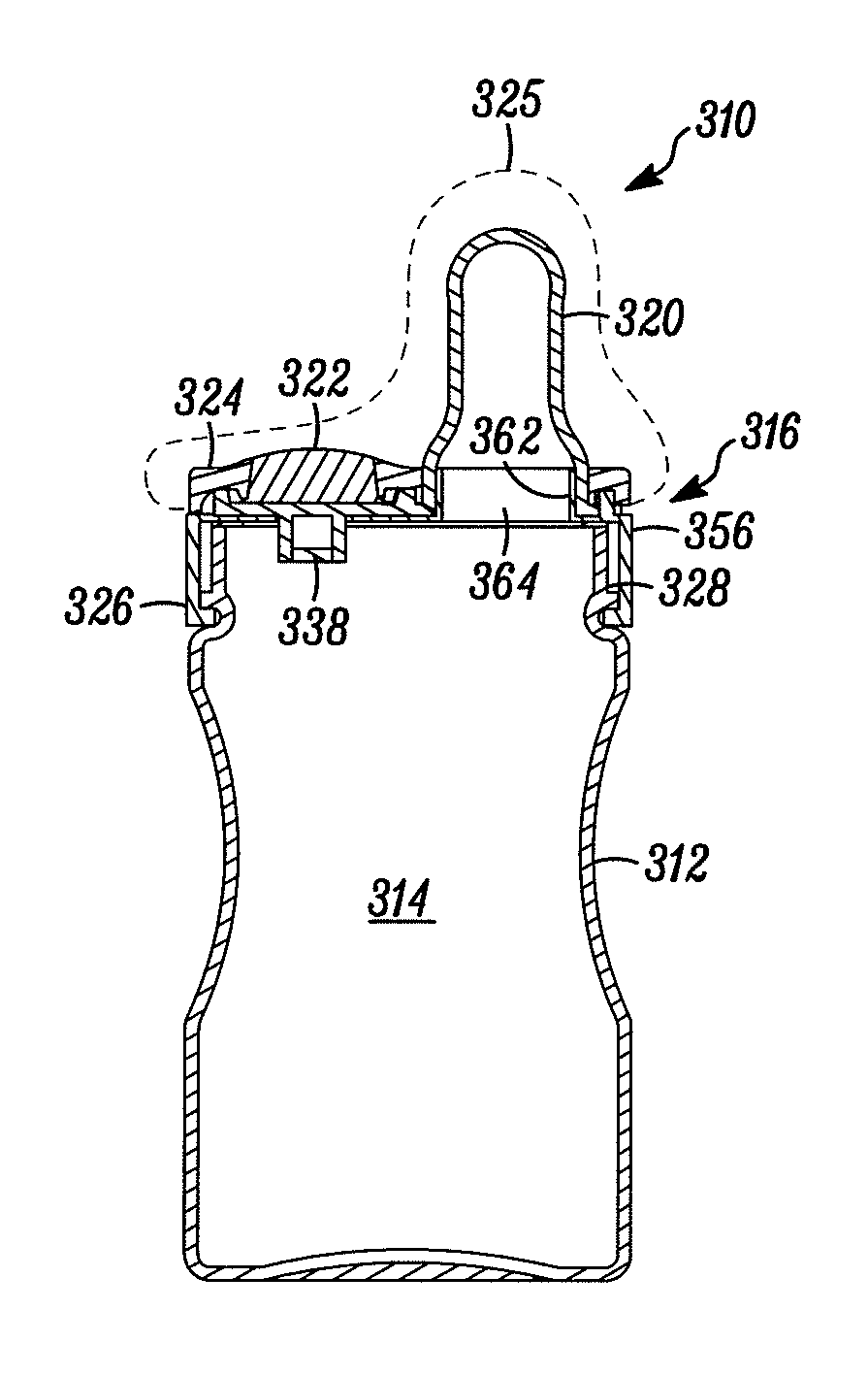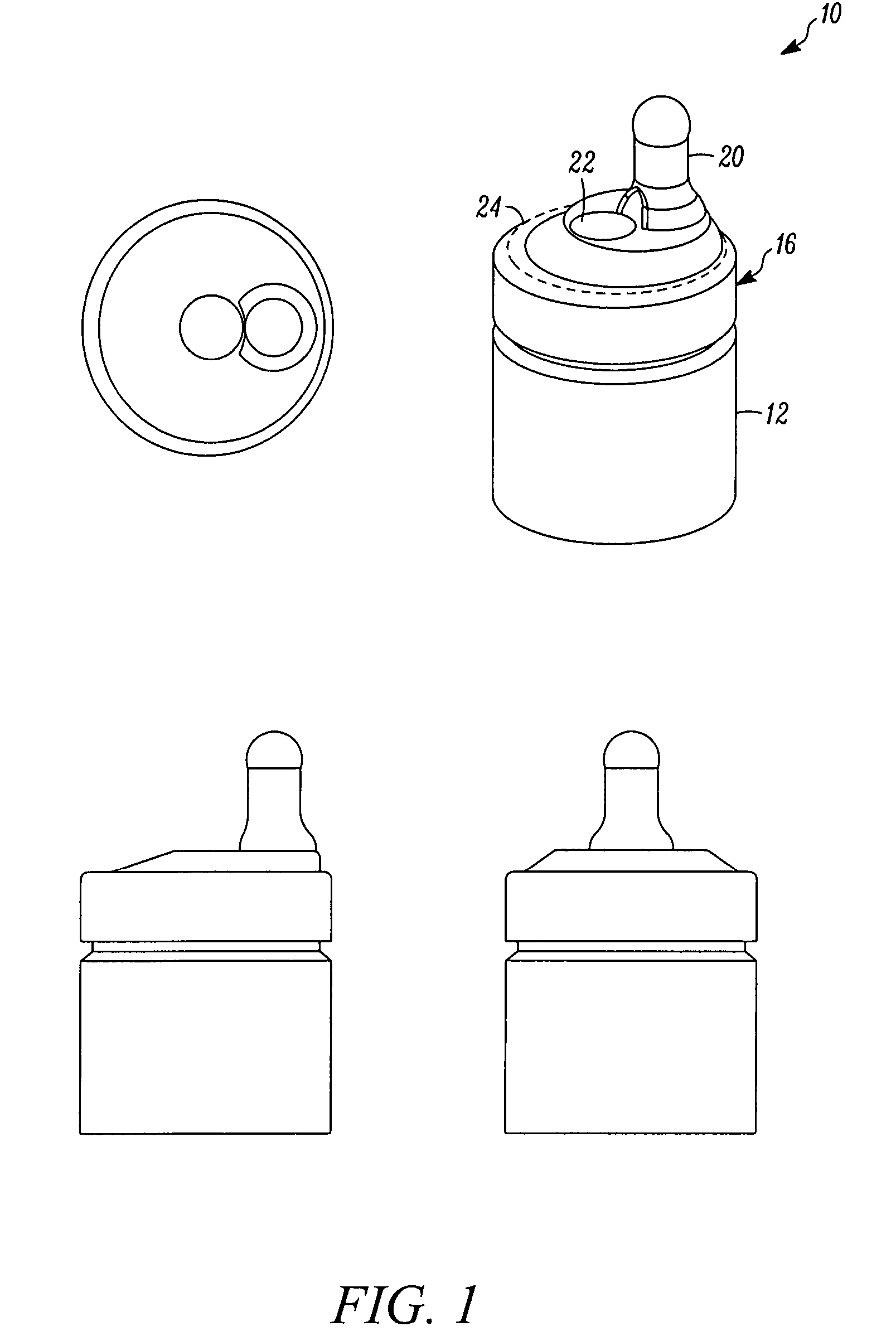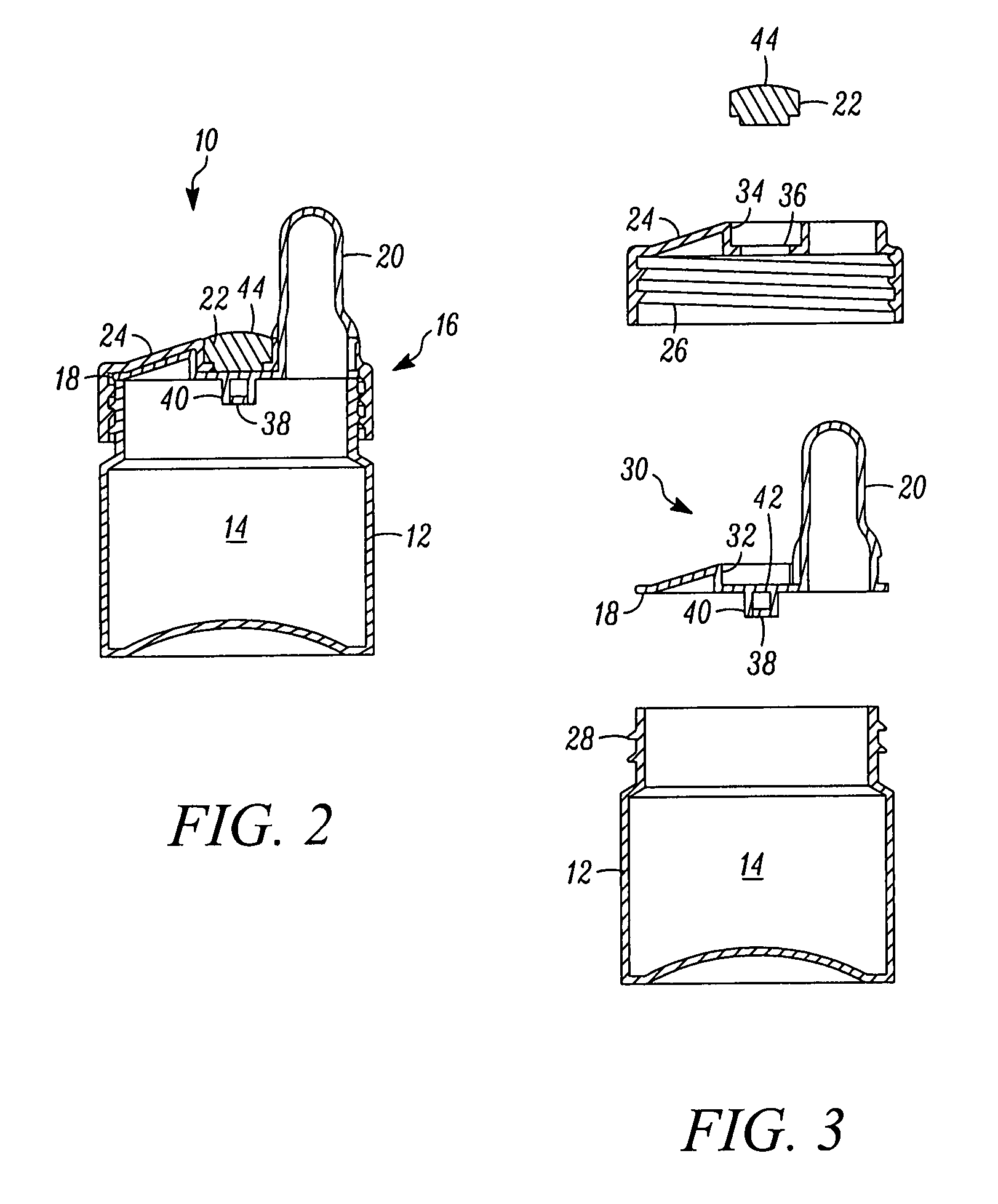Ready to drink container with nipple and needle penetrable and laser resealable portion, and related method
a technology of nipple and needle, ready-to-drink containers, which is applied in the field of containers, can solve the problems of undesirably altering the taste profile of the product, difficult to remove all, and difficult to use fat-containing liquid products, such as infant or baby formulas,
- Summary
- Abstract
- Description
- Claims
- Application Information
AI Technical Summary
Benefits of technology
Problems solved by technology
Method used
Image
Examples
Embodiment Construction
[0063]In FIGS. 1-3, a container embodying the present invention is indicated generally by the reference numeral 10. As described further below, the container 10 is penetrable by an injection member, such as a filling needle, for aseptically filling the container with a product through the injection member, and a resulting penetration hole in the container is thermally resealable, such as by the application of laser energy thereto, to seal the product within the container. The container 10 comprises a body 12 defining a chamber 14 for receiving the product, and a container closure 16 including a sealing portion 18 extending about the periphery of the container enclosure and forming a substantially fluid-tight seal between the container closure and the body 12. A nipple 20 of the container closure 16 is in fluid communication with the chamber 14. As described further below, the nipple 20 seals the chamber 14 with respect to the ambient atmosphere during storage of the product in the c...
PUM
 Login to View More
Login to View More Abstract
Description
Claims
Application Information
 Login to View More
Login to View More - R&D
- Intellectual Property
- Life Sciences
- Materials
- Tech Scout
- Unparalleled Data Quality
- Higher Quality Content
- 60% Fewer Hallucinations
Browse by: Latest US Patents, China's latest patents, Technical Efficacy Thesaurus, Application Domain, Technology Topic, Popular Technical Reports.
© 2025 PatSnap. All rights reserved.Legal|Privacy policy|Modern Slavery Act Transparency Statement|Sitemap|About US| Contact US: help@patsnap.com



